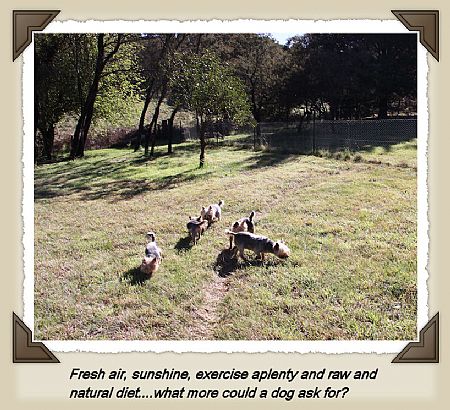|
'There are none so blind as those who will not see'............
If you are serious about taking a yorkie
into your home and heart, and want to do all you can
to hope for a long and happy life, please do your own research for
'VACCINOSIS DOGS'
on the internet. Dont take my word for it.
" Unless man duplicates a blade of grass, nature can laugh at his so-called scientific
knowledge. Remedies from chemicals will never stand in favor compared with the products of nature,
the living cell of the plant, the final result of the rays of the sun, the mother of all life. " - Thomas A. Edison
Who is irresponsible, the one that studies and makes the decision not to
vaccinate or the one who vaccinates without asking questions?
Free e-book
Here is a link to Pat McKays Free ebook on Natural Immunity,
Why You Should Not Vaccinate.
http://www.animalhomeopathy.net/id23.html
**
!! Xylitol the Silent Killer !!
http://www.petmd.com/blogs/fullyvetted/2011/feb/xylitol_now_in_drugs
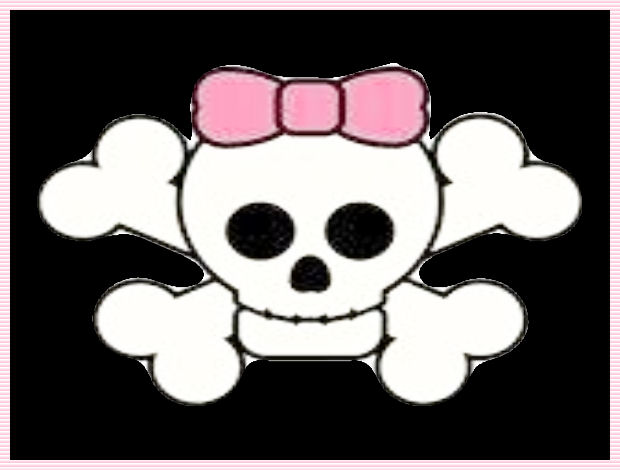
This product is a naturally occurring sugar substitute.
When refined it can be deadly to dogs, causing liver & organ failure.
This page covers
NATURAL REARING - RAW DIET
VACCINATIONS (or, rather, NO vaccinations)
TOPICAL POISONS
If you are genuinely interested in and concerned for
the long term health of your yorkie puppy/dogs, please study this
page in depth.
http://www.naturalrearing.com/coda/index.html
**
Make up your mind that happiness depends on being free,
and freedom depends on being courageous. Pericles
The truth comes in three stages.
First, it is ridiculed
Second, it is violently denied
Third, in time it becomes self evident
**
We have been delighted at the response to this webpage.
It's gratifying to know that so many people are genuinely interested
and concerned for the health and longevity of their puppy.
From Gina, taken from the Guest book page.....
I have read your website and have to say it is the best site around.
Not only is it really informative, but all your views are so sensible and
have the dogs health as priority. Our eldest dog was fed store dog
food and as a result her teeth suffered whereas our 3 year old is fed
only raw food and was given chicken wings straight away to
ensure healthy strong teeth. So I totally agree with it all.
**
Yetholme puppies are special, very special.
Why?
I consider Yorkies to be my vocation in life. Prior to yorkies I raised and exhibited horses.
I love to have young animals about me.
With the arrival of a new baby there is ever the hope that 'this' one will be the next Yetholme showdog,
the next Yetholme Best in Show prospect. Sometimes it happens, sometimes it doesnt, but no matter what,
each puppy is treated with tender loving care, and its
every need is met, physically and emotionally.
I am available for advice/help to new puppy parents 24/7.
Most times, I only hear from people when there is a problem but they fail to let me know if all is well!
My dogs, and I've been breeding/showing yorkies for around 45 years now, had always been fed some raw as well as kibble.
For several years, I have been concerned at what I've been learning about commercial and processed dog food, especially
in relation to kidney and liver disease, skin ailments, allergies, bad teeth etc., and I'd become increasingly sceptical and
disbelieving about the manufacturers' claims as to the 'goodness' of their products. It's a big dollar industry with big dollars
being spent on marketing because they know how much pets mean to their owners.
CRAPPLE (oooops, kibble!)
The rubbish the industry shovels into kibble and other commercial foods as filler are made up of floor
sweepings, feathers, and other garbage not fit for consumption. By-products, by industry definition can
be good or bad – in the pet food industry they are inherently bad. Raw feeders don’t feed by-products, they
feed whole foods and chicken feet, necks, etc. and are all whole foods because they are purchased for exactly
what they are – they have not been altered and they are not being cooked into something else. The use of
grains such as corn, soy and wheat are responsible for many health issues in dogs, not to mention the appalling
number of deaths a couple of years ago when melanin from China was found to be used as a filler.
Therefore, sometime ago I made the decision to remove all kibble and processed food from my
dogs' diet and feed 100% fresh, raw and natural.
Their diet now consists of chicken necks and wings, chicken quarters, lamb and beef hearts
and liver, tripe, mutton flaps, brisket bones, yoghurt, eggs. I enjoy shopping for the dogs, but
even more I enjoy the enjoyment they are getting from meal time.
The fresh, raw, natural diet, in addition to plenty of exercise and sunshine, ensures the
dogs are fit, healthy and happy. Below are some links you might care to look at.
and one of the greatest benefits of a raw diet and meaty bones
is a clean and healthy mouth/teeth, so important for ensuring a healthy heart and
poison-free system, all of which promote longevity in our best friends...........
I urge anyone with a dog or considering getting a dog to research the raw
method of feeding and then make their own considered decision. Your dog will thank you
for it. Your vet will not.
Going hand in glove with the adoption of the fresh, raw food diet is the complete and utter aversion to
chemicals being used on and in the dogs, such as the spot on flea treatments and vaccinations.
The former are having a cumulative effect, often resulting in seizures and other neurological disorders.
Liver disease in dogs is one of the leading causes of death in dogs each year.
The liver is very important for ensuring a long, healthy life. It purifies the blood, eliminates waste
and aids healthy digestion. The liver is susceptible to a variety of diseases and conditions.
Whenever the liver is compromised, the life of your dog is in serious jeopardy.
Causes of Liver Disease
Here are ten causes of liver disease:
1. Poor diet
2. Bacterial infection
3. Viral infection
4. Trauma, such as a blow when hit by a car or through a case of heatstroke
5. Some prescription drugs, including acetaminophen or medications used to treat other medical conditions
6. Toxic substances in the environment, such as pesticides
7. Over vaccinating
8. A birth defect or abnormality of the liver
9. Genetic predisposition
10. Ingesting poison
Symptoms of Liver Disease
If you suspect that your dog is suffering from liver disease, here are some symptoms to look out for:
• Gastrointestinal upset such as vomiting and diarrhea
• Loss of appetite
• Depression and lethargy
• A swollen or distended belly
• Pale or gray feces
• Discolored urine
• Jaundice
• Increased urination and water consumption
• Severe neurological problems such as seizures or aimless pacing
• Viral or bacterial infection Prevention is the best defense against liver disease and
being aware of contributing factors can help you protect your dog.
VacSINations
VacSINes kill !!
Please read carefully.
After suffering many puppy losses following vaccination, a heartbreak for the puppy, the owner and the breeder, I have
reached the point in my breeding programme where I will no longer vaccinate. A wealth of information is provided in the
various links on this page.
If they take the puppy to a vet that insists the pup be
vaccinated they are now armed with knowledge the vet will not want to accept so be strong and just say "NO".
Be thankful to find a breeder who genuinely cares for the lifelong health
of their puppies.
Again, do your own research about this very important issue,
and make up your own mind.
The damage that vaccines cause to dogs' health is mind-boggling and criminal.
**
Our puppies are placed on the understanding that they are pets and not to be
used for breeding and/or showing purposes. I learnt my lesson the hard way,
very early on, when I discovered that the progeny of some of my puppies were
being exported for sale to pet shops in foreign countries. I vowed then to do my
utmost to ensure that this never happened again and puppies are, therefore,
registered on the Limit Register which means 'not for showing, export or
breeding'. No exceptions will be made.
 |
The gene pool in Australia is very limited.
This has meant countless hours have been spent in researching the best bloodlines the world has
to offer and importing top quality dogs in the constant endeavour to improve. Health and soundness are as important as beauty.
|
|
Each baby is carefully planned and eagerly awaited.
Once their eyes are opened, they are moved from the quiet room in which they were born into the living room where they become used to all the normal household activities, very important for the best socialisation of a puppy.
|
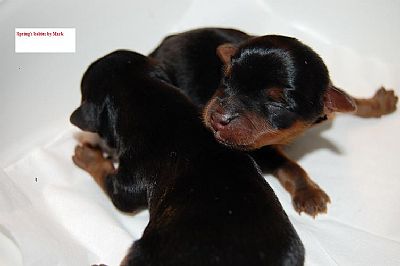 |
 |
As the weeks pass, the puppies are bathed
regularly, their nails are trimmed, their ears
are trimmed, and they become accustomed
to having their hair combed, all in preparation
for the day when they will either be a show
dog or a companion to some lucky family. |
A new puppy is a commitment, not something to be entered into casually, or lightly
They require a duty of care, to be nurtured and loved with their emotional and physical needs met.
Their first days in a new home are very
important; everything is very different to what they have been used to. Great care
should be taken to ensure they eat properly, sleep well, and are handled carefully and not stressed in any way.
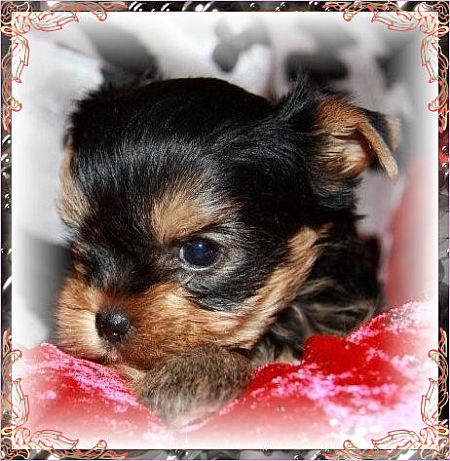
I repeat, please do as much research about vaccinations, the pros and cons, especially
the adverse reactions, so that you can make an informed decision
about your puppy!!!
**
A testament to raw feeding from Marilyn, NSW.....
As new yorkie puppy owners, my husband and I had been misled
for many years on the danger of raw meat
bacteria and benefits of commercial food. After Jan politely & subtly asked me to research the
benefits of natural feeding and negative effects of vaccinations our eyes were allowed to
be wide open for the first time.
Our previous commercial food reared and over vaccinated pets had passed away from various
diseases and cancer which the local vets treated with more chemicals & vaccinations leading to
premature deaths. We loved them & if we had known now what we should have done they
would only be titer tested & raw fed.
Our two beautiful yorkies are just over six months old, very fit & healthy and raw fed only.
We have found a great homeopath vet in a town 50 minutes away and it is worth the
drive to know they won't have commercially lucrative treatments that only benefit the vets' pockets.
The vet is prepared to titer test them in a year or two to
check their immunities rather than vaccinating them every year.
We also feed our yorkies garlic in their food for a natural immunity to fleas. We give them Ziwi peak
which is organic and they enjoy as well.
We are very alert to what we subject our yorkies to. We brush them daily but were
given advice by our vet on reducing the chance of ear infections by bathing
them on a need to basis, when they are dirty using natural shampoos & conditioners.
You would be surprised on the carcinogenic ingredients in the colours and
fragrances of most shampoos and conditioners.
The more I learn, the more I share with my family & friends who have been scared into
using commercial foods & vaccinations by those that have a commercial gain at stake.
It is hard for some to understand but once you see your beautiful yorkie devouring
good fresh food, the more you know it is leading them towards
a long healthy life of being loved and adored.
**
**
Puppy Sighs:
"We've been back to this animal shelter at least five times. It has been weeks since we started all of this."
The woman told the volunteer.
"What is it your daughter keeps asking for?" she asked.
"Puppy size!"
"We have plenty of puppies if that's what she's looking for."
"I know. We have seen most of them" she said in frustration.
Just then the young child came walking in the office.
"Well, did you find one?"
"No, not this time" she said with sadness in her voice. "Can we come back on the weekend?"
The two women looked at each other, shook their heads and laughed.
"You never know when we will get more dogs. Unfortunately there's always a fresh supply" the volunteer said.
The young child took her mother by the hand and headed to the door.
"Don't worry, I bet we'll find one this weekend" she said.
Over the next few days both Mom and Dad had long conversations with her.
They both felt she was being too particular.
"It's this weekend or we're not looking any more" Dad finally said in frustration.
"We don't want to hear anything more about puppy size either" Mom added.
Sure enough they were the first ones in the shelter on Saturday morning.
By now the young child knew her way around so she ran right for the section that housed the smaller dogs.
Tired of the routine, Mom sat in the small waiting room at the end of the first row of cages.
There was an observation window so you could see the
animals during times when visitors weren't permitted.
The young girl walked slowly from cage to cage, kneeling periodically to take a closer look.
One by one the dogs were brought out and she held
each one. One by one she said "Sorry you're not the one."
It was the last cage on this last day in search of the perfect pup. The volunteer opened the cage door and
the child carefully picked up the dog and held it closely.
This time she took a little longer.
"Mom that's it! I found the right puppy! He's the one!
I know it!" she screamed with joy.
Mom startled by all the commotion came running.
"What? Are you sure? How do you know?" she asked.
"It's the puppy sighs!"
"Yes, it is the same size as all the other puppies you held the last few weeks" Mom said.
"No, not size...sighs! When I held him in my arms he sighed" she said.
"So?"
"Don't you remember? When I asked you one day what love is you told me 'Love depends on the sighs of your heart.
The more you love the bigger the sighs!'"
The two women looked at each other for a moment. Mom didn't know whether to laugh or cry.
As she stooped down to hug her child she did a little
of both.
"Mom every time you hold me I sigh. When you and Daddy come home from work and hug each other you both sigh.
I knew I would find the right puppy if it sighed when I held it in my arms" she said.
Then holding the puppy up close to her face she said
"Mom he loves me.
I heard the sighs of his heart."
**
Below are some links you might care to look at.
It is published. Finally, the shocking pet food laboratory testing results have been published in
Spectroscopy Magazine. Now it is time for concerned Pet Owners to shout from the
rooftops...there's toxic levels of lead, mercury, even nuclear waste in some pet foods!
Pet Owners now have the published scientific evidence. The published scientific
evidence that some commercial pets foods contain a lot more than the advertised
choice cuts of meat and fresh vegetables. Some pet foods contain toxic
levels of arsenic, lead, mercury, and even nuclear waste.
Quoting the Paper "Analysis of Toxic Trace Metals in Pet Foods Using
Cryogenic Grinding and Quantitation by ICP-MS, Part 1" published in the January 2011 Spectroscopy Magazine...
"For this investigation 58 cat and dog foods were bought from local stores or
donated by the authors and other pet owners. The samples consisted of 31 dry
food and 27 wet food varieties. Of the 31 dry foods, 18 were dog food and 13 were
cat food samples. The wet foods comprised 13 dog food and 14 cat food samples,
representing pet food contained in cans and pouches."
"Pet food prices ranged from the “bargain” store foods priced at $0.02/oz to gourmet or
specialty foods purchased from pet suppliers priced at $0.42/oz. Three canned foods for
human consumption were tested, including tuna fish, sardines, and chicken, which were
sampled for comparison and control purposes."
"The analysis of all the pet food samples showed that the highest concen¬trations
of toxic elements were found in the dry foods of both cats and dogs. Out of the elements
studied, dry food had the highest elemental content for 13 of the 15 elements
examined. Dog food had the highest result for nine of the 15 toxic elements and cat food
had the highest concentration for six of the 15 elements."
"The dry dog food contained the highest concentrations of the following elements:
beryllium, cad¬mium, cesium, antimony, thorium, thallium, uranium, and vanadium.
The wet dog foods contained lower concentrations of the toxic elements
studied than the dry dog foods. The dry cat foods contained the highest results for five of
the 15 elements including arsenic, cobalt, molybdenum, nickel, and lead. The
wet cat foods showed the overall lowest concentrations of the toxic elements
studied than any of the other pet foods studied."
"The presence of several other elements in some of the pet food samples was
unexpected. Uranium, beryllium, and thorium are often associated with nuclear
energy and mining. As stated earlier, concentrations of over 500 μg/kg of
uranium were found in several of the dry dog food samples. A few of the dry cat
food samples had concentrations of over 200 μg/kg of uranium. In these samples
of high uranium concentrations, there were also found to be the highest
concentrations of both beryllium and thorium."
"Part II of this article will examine in detail the data shown in Tables IV–XI and
will calculate the toxic metal exposure levels of the pets on a daily basis,
based on typical size portions. It also will look for a correlation with the
cost of the individual pet foods. The exposure levels will then be compared
with EPA and WHO risk assessment values generated for the human
population, scaled to the weight of a medium-sized dog or an average-sized cat."
Spex CertiPrep President Ralph Obernauf (a pet owner who lost his dog
questionably early) provided TruthaboutPetFood.com with the abstract of their
testing back in October 2010. Just as a reminder, here are some of the
findings from their pet food testing...
As - Arsenic.
Pet Food Average 95 ppb
Pet Food Max 290 ppb
Human Tuna - 14 ppb
Human Sardines - 30 ppb
Human Chicken - 4.4 ppb.
Be - Beryllium.
Pet Food Average 8.6 ppb
Pet Food Max 74 ppb
Human Tuna 6.1 ppb
Human Sardines - 3.7 ppb
Human Chicken - 2.9 ppb
Cd - Cadmium.
Pet Food Average 42 ppb
Pet Food Max 130 ppb
Human Tuna 36 ppb
Human Sardines 14 ppb
Human Chicken 1.8 ppb
Co - Cobalt.
Pet Food Average 200 ppb
Pet Food Max 920 ppb
Human Tuna 23 ppb
Human Sardines 44 ppb
Human Chicken 25 ppb
Cr - Chromium.
Pet Food Average 480 ppb
Pet Food Max 2500 ppb
Human Tuna 25 ppb
Human Sardines 41 ppb
Human Chicken 20 ppb
Cs - Caesium.
Pet Food Average 9.0 ppb
Pet Food Max 28 ppb
Human Tuna 14 ppb
Human Sardines 16 ppb
Human Chicken 2.7 ppb
Hg - Mercury.
Pet Food Average 37 ppb
Pet Food Max 560 ppb
Human Tuna 89 ppb
Human Sardines - ND (non detectable)
Human Chicken - ND
Ms - Molybdenum.
Pet Food Average 550 ppb
Pet Food Max 2300 ppb
Human Tuna 6.2 ppb
Human Sardines 9.3 ppb
Human Chicken 23 ppb
Ni - Nickel.
Pet Food Average 980 ppb
Pet Food Max 3200 ppb
Human Tuna 180 ppb
Human Sardines 380 ppb
Human Chicken 950 ppb
Pb - Lead.
Pet Food Average 210 ppb
Pet Food Max 5900 ppb
Human Tuna 7.2 ppb
Human Sardines 11 ppb
Human Chicken 3.2 ppb
Sb - Antimony.
Pet Food Average 75 ppb
Pet Food Max 970 ppb
Human Tuna 0.90 ppb
Human Sardines 1.6 ppb
Human Chicken 1.2 ppb
Se - Selenium.
Pet Food Average 330 ppb
Pet Food Max 1500 ppb
Human Tuna 360 ppb
Human Sardines 320 ppb
Human Chicken 147 ppb
Sn - Tin.
Pet Food Average 350 ppb
Pet Food Max 9400 ppb
Human Tuna 98 ppb
Human Sardines 28 ppb
Human Chicken 0 5.8 ppb
Th - Thorium.
Pet Food Average 14 ppb
Pet Food Max 87 ppb
Human Tuna - ND
Human Sardines 0.10 ppb
Human Chicken 0.08 ppb
Tl - Thallium.
Pet Food Average 4.0 ppb
Pet Food Max 10 ppb
Human Tuna 1.0 ppb
Human Sardines 3.1 ppb
Human Chicken 1.8 ppb
U - Uranium.
Pet Food Average 91 ppb
Pet Food Max 860 ppb
Human Tuna 0.20 ppb
Human Sardines 6.0 ppb
Human Chicken 0.20 ppb
V - Vanadium.
Pet Food Average 280 ppb
Pet Food Max 7400 ppb
Human Tuna 6.2 ppb
Human Sardines 5.2 ppb
Human Chicken 5.6 ppb
Conclusions published in the abstract...
"Toxic Element Exposure for Cats"
"A 10-lb cat eating 1 cup a day (100 g) of dry food or 1 small can of wet food (175 g) with the
maximum contamination would be consuming about:
29 mcg (micrograms) Arsenic (greater than 20 times Reference Dosage limit)
13 mcg Cadmium (greater than 3 times the Reference Dosage limit)
17 mcg Mercury (greater than 30 times the Reference Dosage limit)
42 mcg Uranium (greater than 3 times the Reference Dosage limit)"
"Dry cat food contained more contamination which exceeded human
Reference Dosage guidelines than wet cat food."
"Toxic Element Exposure for Dogs"
"A 50-lb dog eating 5 cups (500 g) a day of dry food or 1 large can of wet food (375 g) with
the maximum contamination would be consuming about:
124 mcg (micrograms) of Arsenic (greater than 20 times Reference Dosage limit)
65 mcg of Cadmium (greater than 2 times Reference Dosage limit)
280 mcg of Mercury (greater than 120 times Reference Dosage limit)
5 mcg of Thallium (greater than 2 times Reference Dosage limit)
430 mcg Uranium (greater than 5 times Reference Dosage limit)
1200 mcg Vanadium (greater than 6 times Reference Dosage limit)"
"The average dry dog food exceed the Reference Dosage levels for many compounds and
wet dog food had fewer results exceeding the human Reference Dosage limits."
"Dry dog food had the largest number of significant toxic metals overall."
"Seven samples of pet food contained significant amounts of Uranium from 500 to 2000 ppb."
And I have to mention specifically the discovery of uranium, beryllium, and thorium
in pet foods. When you perform a Google search of these three metals, you'll find
links to a slew of scientific papers like...(bold added)...
"A solvent-extraction process is presented for the recovery of uranium and thorium
from radioactive feed solutions highly salted with beryllium nitrate...."
and
"Nuclear Materials: Beryllium, Deuterium, Uranium, Enriched Uranium, Tritium, Thorium,
Depleted Uranium, Gadolinium, Plutonium, Uranium Market ..."
and
"List of states with nuclear sites
Extensive research and manufacturing involving beryllium, uranium and thorium compounds
at two sites, 1942 to 1950s. Records suggest workers faced ..."
and
"Nuclear energy: an introduction to the concepts, systems, and ... - Google Books Result
Raymond LeRoy Murray - 2009 - Technology & Engineering - 532 pages
The reactor demonstrated the feasibility of the circulating fuel concept with salts
of lithium, beryllium, and zirconium as solvent for uranium and thorium ..."
In other words...uranium, beryllium, and thorium - are nuclear waste. Nuclear waste
in dog foods and cat foods from budget to premium. No extra charge.
To read the full paper in Spectroscopy Magazine, click here.
Pure Bred..Enough said!
|

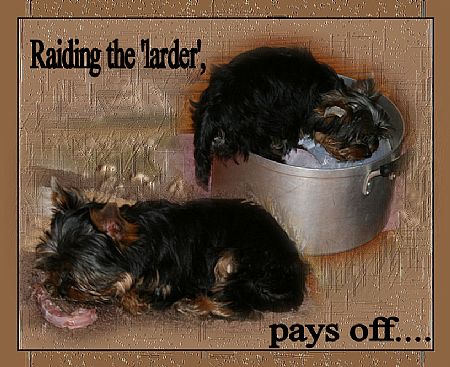
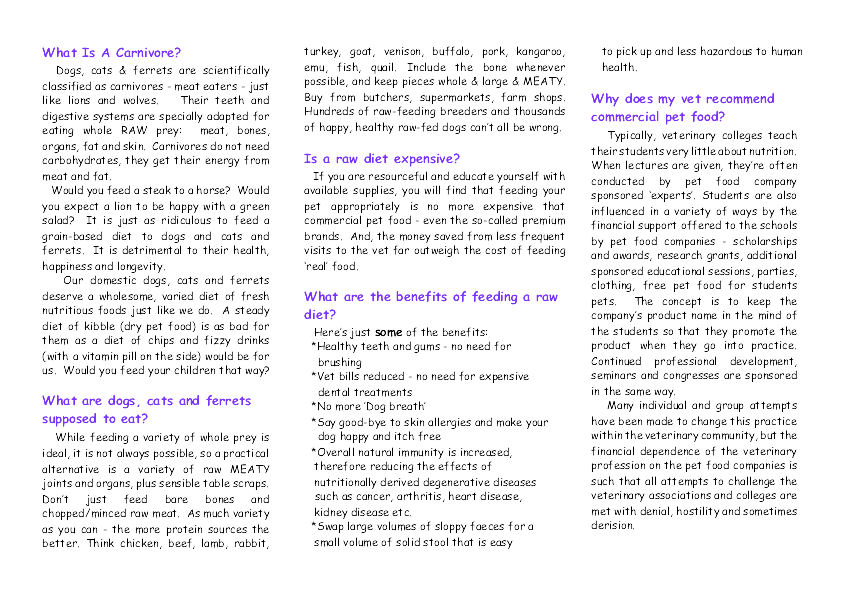
![]()
![]()
![]()
![]()
![]()
![]()





